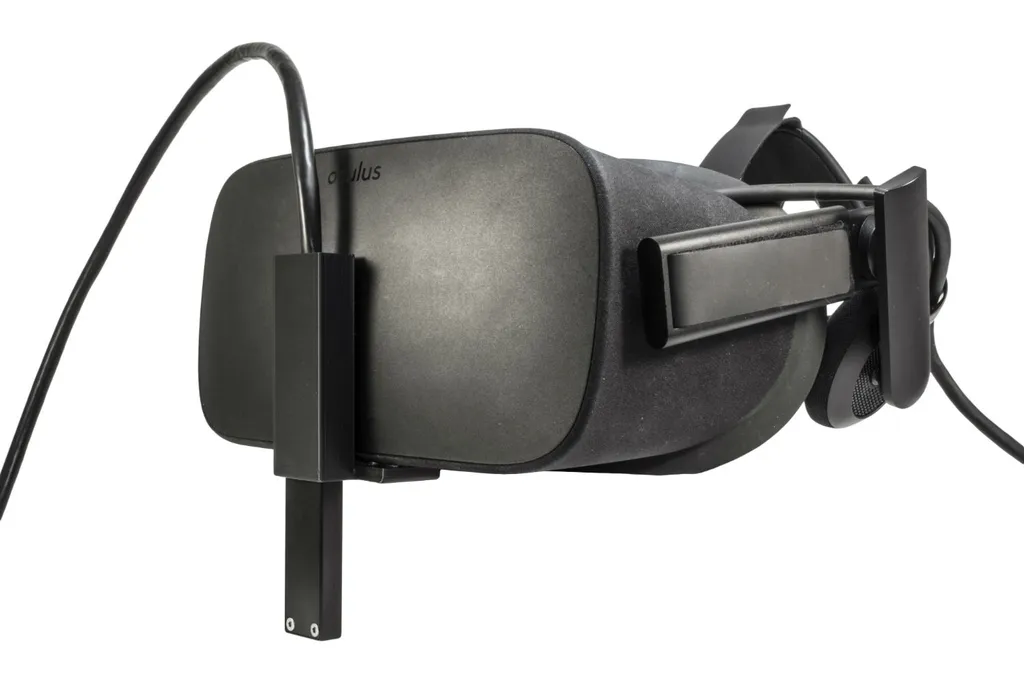While tech giants continue to invest in and acquire eye-tracking firms like Eye Tribe, BinaryVR is pushing on with its facial tracking solution for VR.
The California-based company recently started shipping its first development kit for a device that doesn’t follow the user’s eyes, but instead reads facial motion in the mouth, chin and cheeks and replicates them on a VR avatar. To do this, an infrared 3D capture camera hangs on the front of your headset (either the Oculus Rift, HTC Vive, or other devices) and dangles in front of the lower half of your face, reading your expressions.
Shipments begin a little later than the original estimation of October 2016. According to a blog from the company, the first development kits will be going out to a “small number” of partners, while remaining customers will be notified on a one-by-one basis. Developer kits cost $349 and also come with a Unity plugin SDK. Details surrounding the release of an eventual consumer version of the kit have not been revealed.
While eye-tracking may ultimately be more important to the future of VR thanks concepts like foveated rendering, facial tracking will also play a big part in convincingly turning our real selves into virtual avatars. The complexities of the human face and the sheer range of expressions make accurate replication no easy task, and BinaryVR is one of a few companies solely focused on this area.
According to data collected by BinaryVR, 54% of those purchasing a developer kit intend to use it with the HTC Vive, while 34% will pair it with the Oculus Rift and the final 12$ with other headsets. 38% of developers also intend to use the tech for social VR experiences, and 25% for gaming. 9% will use it for research, 8% for enterprise, 6% for healthcare, 3% for education, and 11% for other means.
It may be that the future of facial tracking in VR isn’t a singular solution like the one seen here but instead an integrated mix of both facial and eye-tracking, which can be seen in a solution currently in development at Emteq. Either way, BinaryVR’s solution could perhaps one day mix with another eye-tracking method like SMI’s recently updated social eye-tracking to provide a more complete alternative.


























